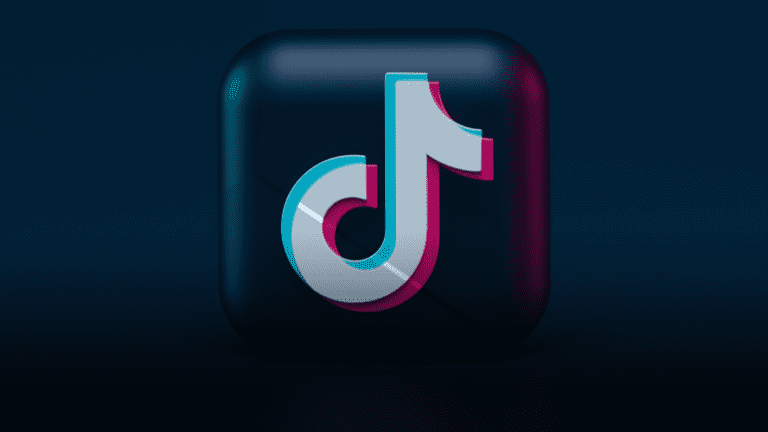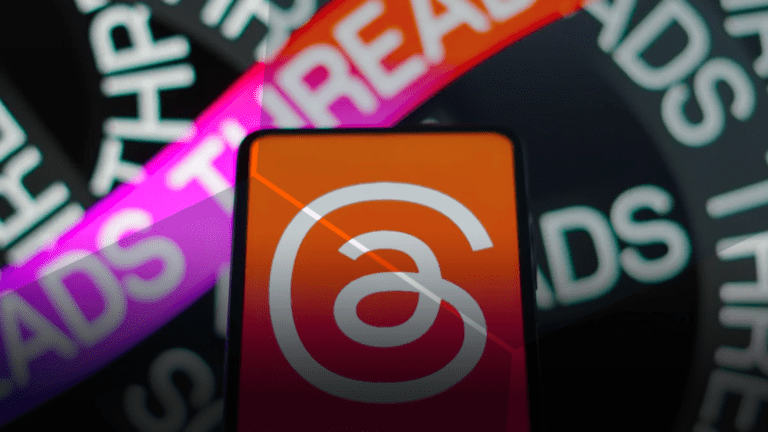
Rebecca Holloway
Senior Social Media Strategist
Rebecca is an award winning Senior Social Media Strategist who specialises in paid social media campaigns.

Straight from our Sharing Social podcast, here are the digital marketing lessons we learned from IBM's EMEA Social Media Leader, Nada Alkutbi.
Every month, Base Creative and ContentCal join forces for the Sharing Social podcast, the monthly show to connect the people behind the hashtags with content, ideas and insights.
Today we wanted to share our lessons learned from our guest this month, Nada Alkutbi, EMEA Social Media Leader at IBM. Nada is an experienced digital and social media expert, who has so far successfully spearheaded the IBM social influencer program, played a key role in the design of the global IBM Influencer Council, and led the UKI employee advocacy programme helping IMBers to improve their social presence.
Read on to learn more about how IBM runs their influencer marketing and builds their social strategy, and how you can adopt some of these techniques into your own marketing efforts.
When you set out to run a campaign, the first thing you need to do is set your social media objectives. Nada states that the key to your social media content should be to build belief in your brand.
“Our mission is to essentially build belief in IBM through relevant story-driven content and ongoing connection and dialogue with our audiences.”
Nada Alkutbi
Nada goes on to talk about the importance of the four C’s – which include Channel, Champion, Cadence, and Content – and how she used this framework for one of IBM’s recent Think events. Here’s how you can use these in your social media strategy:
Consider which channels you want to be on and where your audience is most engaged. For a B2B audience, you might want to prioritise LinkedIn.
How’s your employee advocacy strategy? Make sure you’ve dedicated time to enabling and empowering employee advocates to be social and get involved.
How often do you publish content? Don’t be tempted to post more than you need to. Remember, it’s quality over quantity. Nada recalled how by publishing fewer pieces of content IBM was able to drive higher levels of engagement.
You can’t neglect content! The key is to optimise your content for each channel, making sure it’s social first and ties back to each of your goals.
Video has become a cornerstone piece of content this year, especially with the rise in TikTok users and the popularity of Instagram Reels increasing.
Follow our quick guide to ensure you’re maximising the results from your short-form video content.
When we interviewed Nada, it was clear that there were three major themes that kept cropping up when we talked about building a social media strategy:
The first and one of the most important areas to consider is optimisation. During the development of your strategy and goal setting, you will decide which social media channels you’re going to post content to. With this in mind, you must consider the user intent of your audience and what types of content they’ll most likely engage with, and of course, what content they will find valuable.
When planning your content it must be developed specifically for each channel, as Nada states: “It’s got to be a strategy that is tailored for the platform and the channel, so any content we create is not one size fits all.”
One of the most challenging parts of running a social media strategy is getting your team engaged with the content you produced. Often one of the biggest hurdles is caused by teams not knowing how to use social media in a way that will nurture the company’s reputation and brand online.
This is why it’s super important to empower your teams to use social media confidently. Over the past year, as many have turned to social media to keep in touch and interact during lockdowns, Nada told us that, “at the moment we are working closely with specific teams and our subject matter experts on actually creating social content or supporting them in creating social-first content, like blogs or involving them in our marketing campaigns and introducing them to the influencers”
This allows for an integrated approach and ensures that everyone is on board – “it shouldn’t really just be an add-on”.
Last but not least, planning! With proper planning, you can ensure that all the moving parts of a strategy come together as intended and help you achieve your goals. We spoke to Nada in-depth about how this approach applies to employee advocacy:
“I think it’s important you start small and then scale so that you’re able to see the results quicker. Break down your employee advocates into different tiers. So in tier one are the execs or a small group of individuals that you’ll do one-to-one sessions with to develop a visibility plan and content plan for them.”
Nada Alkutbi
Nada goes onto explain how you can use your subject matter experts to help accelerate your social growth “Then there’s your tier twos who are your real subject matter experts – those thought leaders that are willing to be involved in your marketing campaigns, speak at your events and webinars, and help you produce thought leadership content. Then tier three users are all other employees that might want to get social.”
All too often marketing activities aren’t tracked properly, making it a guessing game knowing what’s worked and what hasn’t.
The first thing you need to do is set your KPIs around the activity you’re running and the stage it’s at: top of funnel, middle of funnel, or bottom of the funnel. These will differ depending on where your customers are in the user journey. Here’s how IBM measure success at each stage of the funnel:
“In terms of building the brand, the KPIs and the measurements that we’d look at are all around the upper funnel metrics. So that’s looking at on platform engagements which are likes, comments, and shares”.
Nada goes on to state how this is a great indication of whether content is resonating with IBM’s audiences on social media.
The mid funnel focuses on customer experience. It’s really important “to monitor inbound DMs and comments that we’re getting, making sure that our audiences know that they’re heard and that we’re responding back and engaging in a dialogue with them”.
This stage of the funnel is where you’ll be looking to measure conversions. Nada goes on to talk about measuring “traffic driven to our landing pages, engaged visits, what percentage of new visitors we’re driving through the different social tactics and channels, and of course any registrations that were driven through the event and responses as well.”
No matter where in the funnel you are, you should always be using tracking links (UTMs) to correctly attribute success to the right content. This will ensure that you’re able to determine what pieces of content were the most impactful and resonated the most with your audience. Use this data to assemble reports and tailor your social media strategy going forward.
When setting benchmarks, “it’s always a good idea to benchmark against yourself and how well your content performed last year”. Nada explained that at IBM, they consider year-on-year improvement to compare their results to, and you can even compare to similar accounts, or compare to accounts in other markets.
Influencer marketing can be extremely powerful and can help you build brand awareness, credibility and trust with your target audience. Influencers are great if you’re looking to pivot the perception of your brand, and help highlight your offering so people can associate it with you.
Before identifying external influencers, don’t overlook using your team as part of your influencer marketing campaign. Nada spoke to us about how IBM were able to create some of their best quality content and leadership content through internal influencer marketing campaigns.
The next step is to approach external influencers. IBM uses a third-party agency to help identify influencers based on the topics they want to cover in their campaign. From here, several metrics are considered to see who’s going to be a good fit, including authority, reach, resonance and relevance.
You also need to consider where potential influencers are active on social media – does this fit with your goals? If an influencer is very active on LinkedIn, then this could indicate that they would be a great addition to your campaign and set you up for success.
Finally, when you’re ready to work with an influencer, be sure to create the brief together. Nada goes on to talk about the advantages of this “I’m really big on co-creating the brief with the influencer, so it isn’t just about us also dictating what we want to do. I think it’s really important that we have that conversation with the influencers because they know their audience best and they know what kind of content resonates best for their audiences as well.”
Now you’re ready to start your campaign! If you use any of the lessons from IBM that we’ve talked about today, be sure to drop Nada a line on Twitter or LinkedIn. We’ll be back next month with another Sharing Social podcast episode and plenty of learnings!
Be sure to give the episode a listen here.

Senior Social Media Strategist
Rebecca is an award winning Senior Social Media Strategist who specialises in paid social media campaigns.
View my other articles and opinion pieces below
When it comes to B2B social media marketing, few platforms are more misunderstood than TikTok. These misconceptions can lead to one of the most exciting platforms in social media marketing being written off by B2Bs – and huge opportunities missed. If you don’t take TikTok seriously enough, you will miss out to the businesses that […]

What’s the point? I think about that question all the time. No, I’m not having an existential crisis. I think about it because it’s the first question on the minds of many of our clients and prospects when considering their social media marketing activity. Why is social media important for businesses? What’s the value of […]

Uncertainty. There are few words more toxic in the world of business. And if there’s any business that’s been plagued by uncertainty, it’s Twitter. If you have paid Twitter Ads as part of your business-to-business marketing strategy, you’ll no doubt have felt more than your share of uncertainty over the last year. That ends now. […]

Everyone is talking about Threads. After months of chaos and rule changes on Twitter, Meta’s new platform is promising the repackaged return of Twitter’s golden years. Have a Twitter B2B marketing campaign sitting on the shelf that you haven’t had the chance to launch? This is a perfect opportunity to use it on Threads instead, […]
